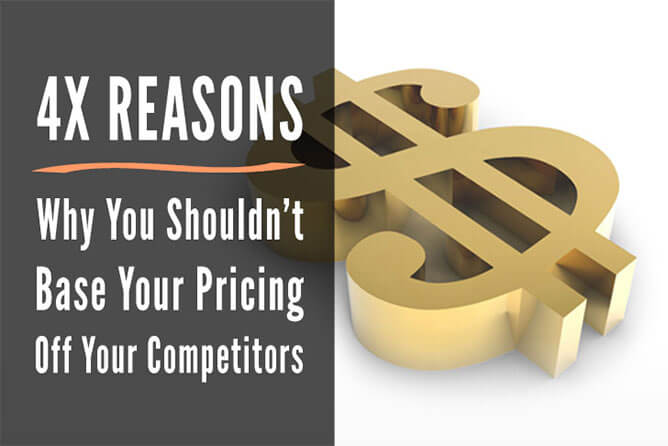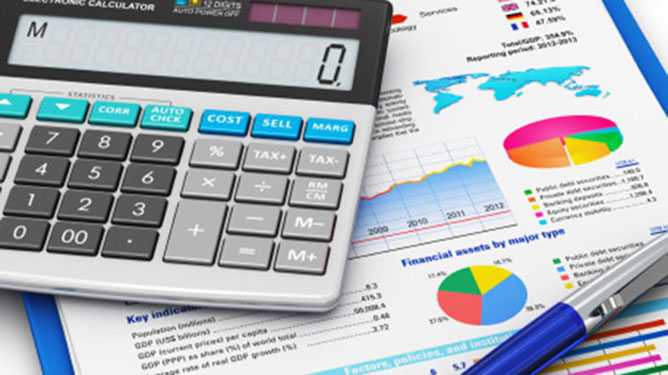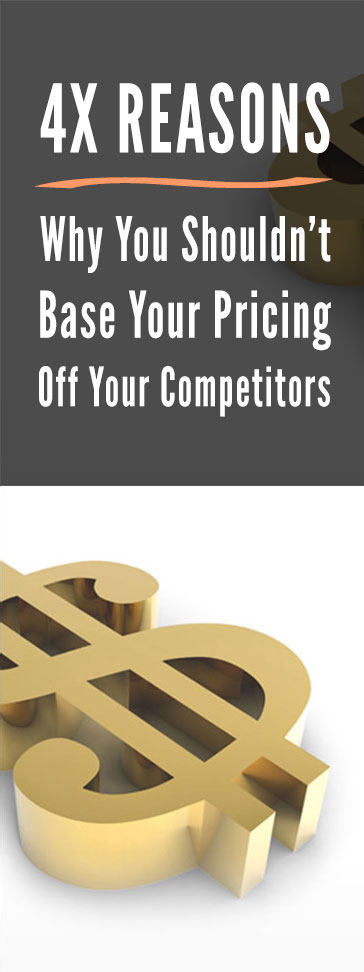One of the most common problems I see photographers make is choosing to base their pricing of that of their competition and then wonder why their photography business isn’t profitable.
It’s important to get your pricing correct from the get go, otherwise you’ll likely be faced with the prospect of potentially closing up shop and going out of business sooner than you think.

Here are four primary reasons as to why you shouldn’t copy your competitions pricing:
Reason #1:
You have no idea how your competitor arrived at those prices, for all you know they could have just copied another photographer like you.
Reason #2:
You don’t know the COGS (cost of goods sold) or the additional expenses that your competitor incurs as part of doing business. These expenses would therefore be substantially different to yours.
Reason #3:
Because you don’t know your competitors COGS or general business expenses, you simply have no idea what their profit margin is and whether or not their business is actually profitable?
Reason #4:
Finally, you don’t know the income goals of your competitor, they could be a lot lower or a lot higher than what you would like to earn as a professional photographer.
It’s clear to me that the reason photographers copy the pricing of their competition is due to a lack of fundamental business knowledge that just simply isn’t taught at your local institute or university.
Therefore, in the rest of this article I’d like to show you a simple process for determining your core pricing without over complicating things.

There are essentially four key factors that you need to consider when creating your pricing, keeping in mind that every photography business is unique and there will be factors you should consider when making your calculations that aren’t discussed here.
The four factors you need to consider are income goals, business operating expenses, time and cost of goods sold (COGS). For the purpose of this article, I’ll also only be focusing only on charging per hour as opposed to charging per project in order to keep things simple.
1. ) Income Goals
The best place to begin is to start with the end in mind, so in this example before you do anything else you need to know exactly the income you would like to earn from your photography business?
Write this figure down on a piece of paper because you’ll need it shortly. I’m going to use $50,000 dollars as an example.
2. ) Business Operating Expenses
Next I want you to calculate your business operating expenses for one year. Your operating expenses will include things like:
- Photography Studio Rent
- Car Maintenance & Fuel
- Camera Equipment & Computers
- Photo Editing, Album & Color Management Software
- Educational Materials & Training
- Domain Name, Website & Image Hosting
- Utilities (Mobile & Internet)
- Marketing Budget
- Equipment & Liability Insurance
- etc…
Please keep in mind that every photography business is unique and you will have to do your own research identifying all expenses that specifically relate to your individual photography business.
Once you have this number worked out, please go ahead and add it to your income goal.
For example:
$50,000 (Income Goal) + $20,000 (Business Expenses) = $70,000 per year
3. ) Time
Next I want you to ask yourself how much time per week do you have available and are prepared to work on your business?
Keep in mind that when working from home it can be difficult to avoid distractions and therefore your estimate should take this into consideration.
For this example, I’m going to start with 20 hours per week for 48 weeks of the year. Don’t use 52 weeks as you need downtime recover and relax, so don’t neglect your holidays.
Now take the total of your income and operating expenses then divide it by how many weeks of the year you intend on working and in this case that would be 48 weeks.
For example:
$70,000 per year / 48 weeks = $1,458.33 per week
Then divide this number by the available hours you will work each week which in my example is 20 hours.
For example:
$1,458.33 per week / 20 hours = $72.91 per hour
The resulting number is exactly how much you should charge per hour for your time.
As you begin to create systems and processes for your business, you’ll start to become more proficient with your work and as a result you’ll learn precisely how long tasks take you to complete which in essence will make pricing your photography services a lot easier.
But at this stage when you quote a job it’s crucial that you quote the correct amount of hours the job will take, otherwise you’ll end up in the red. Therefore when first starting out instead of being exact, overcompensate by calculating your time in blocks of 5, 10 or 15 hours as opposed to individual hours and this way you won’t run into trouble.
4. ) Cost Of Goods Sold (COGS)
In most cases your sales will include physical products like photo album, photo frame or canvas etc. These items are classed as COGS which stands for “Cost Of Goods Sold”.
As a general rule of thumb you want to have at least 100% profit margin on all cost of goods sold, so that if an album purchased from a wholesaler costs you $300 dollars you would need to charge $600 dollars.
Now of course you may choose to adjust the profit margin up or down according to how expensive a product may be. Inexpensive products can usually be sold at a higher profit margin of 300, 400 or 500% more than that of an expensive product.
The COGS will almost always be different with each client, unless of course you’re smart and create set of packages that never change and allow you to scale your production. Therefore the COGS are always factored into the equation last.
So make a list of all of the products you intend on selling on top of your services. Beside each product write down the price you intend on selling them for making sure that you include your profit margin.
What If I Don’t Know Or Have Trouble Calculating These Numbers For Your Photography Business?
Simple answer, outline everything and the numbers you don’t know guesstimate until which time you’ve been in business long enough to have established numbers that are based on fact. With that said, you shouldn’t have to guess your desired income or time as these should come quite naturally to you.
A common mistake photographers make is under pricing their products and services, therefore I recommend that you intentionally overcompensate and add-on an additional ten to twenty percent onto your figures just to be safe.
If you’ve read this far you’ve learned why it’s important not to based your pricing off your competitors, what four key factors you should consider before setting your prices and how to calculate the minimum price you should be charging for your products and services.
In order to take full advanced of what you have learned in this tutorial, what you should do next is take the time and workout these specific numbers for your business.














Very helpful article! I was always looking around at how much others were charging but I’ve realised that that some of them are doing it more as a hobby so they aren’t actually making much money!
Kerry, I’m glad you found my article helpful 🙂